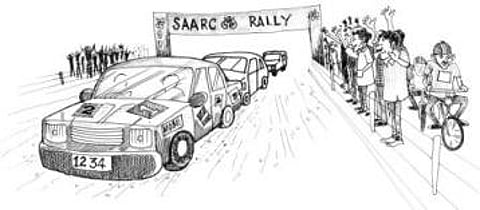Getting connected at the SAARC Summit
Among the ceremonial events that marked the opening of the 14th SAARC Summit in Delhi in early April, was the flagging-off of a car rally. Beginning two weeks earlier in Dhaka, the rally had briefly halted in Delhi en route to covering all of the member countries (then seven) of the regional grouping, in the space of a month. It was a rather literal-minded effort to underline the Summit's ostensible theme of 'connectivity'. But even as the cars went their way, proudly emblazoned with the emblems of generous Indian corporate sponsors, nine forlorn youths from Maharashtra were making their way back from the Wagah border. They had cycled 2000 kilometres over a few weeks, in the expectation of visiting Lahore on a peace-and-goodwill mission – only to have their visa applications rejected at the last moment.
Is 'connectivity' about a coming together of the people of Southasia? Or is it merely a means of creating greater opportunities for Indian business? Certainly, as Prime Minister Manmohan Singh addressed his summit partners shortly after assuming the SAARC chair from Bangladesh, he seemed to be advocating connectivity in its widest possible sense – a confluence not merely of "physical, economic" attributes, but also "of the mind". Southasia as a region, he said, has traditionally only flourished when it has been connected within itself and to the rest of the world.

